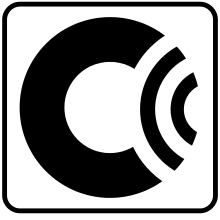C-Netz
This articleneeds additional citations forverification.(September 2009) |



TheRadio Telephone Network C(German:Funktelefonnetz-C,abbreviated asC-Netz), was afirst generationanalogcellular phonesystem deployed and operated inGermany(at firstWest Germany) byDeTeMobil(formerly ofDeutsche BundespostTelekom, currentlyDeutsche Telekom). It utilized theC-450standard,[1]originally developed bySiemens AG,and was the third and last update of a series of analog mobile phone systems used primarily within Germany, superseding theB-Netzand theA-Netzbefore it. It has been decommissioned, replaced by both the newerD-NetzandE-Netzsystems, both based onGSMstandards (which are digital) and operating on 900 MHz and 1800 MHz bands respectively.
C-Netz was active from 1985 to 2000, with certain areas until 2001. Since then, all consumer cellular phone services in Germany are digital-only.
Thedialing codefor the C-Netz was0161,which is no longer in use. As a result, users were not able to transfer their numbers to GSM networks when the C-Netz was shut down.Austriaused an unrelated system with the same C-Netz name which instead utilized theNMTstandard.[1]This differs from previous systems used in Austria (A-Netz,B-Netz) that were based on German standards.
Timeline
[edit]The C-Netz was officially introduced in 1985 (with unofficial trials in 1984) to replace the existing B-Netz/B2-Netz system used in Germany at the time. Due to problems with the B-Netz mobile networks, early adoption of C-Netz was very high, especially in rural areas which had lacked prior B-Netz coverage. However, like other first-generation analog systems, it suffered from poor call quality and was susceptible toeavesdropping.The system was built up inWest GermanyandWest Berlin,but followingGerman reunificationin 1990, was rapidly built up in the new German states.
By December 1988, the service had grown to nearly 100,000 customers, and reached a peak user base of around 800,000 in the early 1990s. It remained popular throughout the decade as a preferred system for mobile car phones, particularly ruraltaxiservices, where it enjoyed an advantage in reception. However, it was inferior in all other ways to the newer GSM networks, and by the late 1990s Deutsche Telekom stopped accepting new customers. Its user base dropped rapidly; in 1999, it went from 230,000 customers in October to 210,000 customers in November.[2] The C-Netz service was shut down on December 31, 2000. Some cells near the German-Dutch border remained active for several more months but were eventually discontinued as well.
Interims use
[edit]The C-Netz radio spectrum in Germany (two 6 MHz wide frequency bands) was reallocated for use withFlarion'sFlash-OFDMmobile networking standard which launched in 2005.[3]It was primarily used to service Germany's rail service with Internet connectivity under the name Railnet.
Technical information
[edit]
The C450 standard was developed bySiemensin 1980.[1]It is a1Ganalog cellular standard that utilized non-audible in-band signaling, audio scrambling via band-inversion and cell network call queuing when congested. Cellular nodes varied in size, supporting a primary cell size of 15–20 km and micro-cells of 2–3 km in size. Channel bandwidth was typically 20 kHz, although it could be operated in a narrow-band mode of only 12 kHz. As its name implies, it was designed for the 450 MHzUHFfrequency range.
Roaming
[edit]The C-Netz's C450 standard was a heterogeneous cellular system that inhibited Internationalroaming.InFrance,France Telecomused theRadiocom 2000analog standard whileSweden,Denmark,the Netherlands,Switzerland,and Austria (also called C-Netz) used theNMTanalog standard in the 450 or 900 MHz bands.
Usage of C-450 outside Germany
[edit]Siemens also deployed C-450 networks for the nationwide cellular networks ofSouth Africain 1986 andPortugalin 1989.[4]
450 MHz-Network
[edit]The450MHz networkis aradio networkof the German water and energy suppliers. The network is mainly used by private companies and has been set up since 2020. Over 1,600 converters are planned, operated by the private company 450connect GmbH. The technology and function are comparable to a mobile network in the LTE standard, primarily for telemetry data transmission and remote control of energy-producing systems.
History
[edit]From 1985 to 2000, Deutsche Telekom operated the analogue mobile phone network C-Netz in Germany between 451 and 466 MHz. Frequency blocks were then allocated to Telekom and other users in this band. A channel bandwidth of 1.25 MHz was required. The allocations were limited until December 31, 2020. On July 12, 2017, theFederal Network Agencyinitiated a frequency plan change for this frequency range in order to re-allocate the frequencies. A term of 20 years was planned for the new allocation.
Although it is only a relatively narrow-band spectrum of 2 times 4.74 MHz (451.00 - 455.74 MHz and 461.00 - 465.74 MHz), the freed up frequencies were due to their good propagation properties (long range, good penetration right into the basement) was very popular right from the start. Around 50 messages and statements were submitted in the first needs survey conducted by the Federal Network Agency in 2017/2018. In particular, energy and water suppliers as well as telecommunications companies, but also associations and manufacturers, reported needs. In addition, the authorities and organizations with security tasks (BOS) as well as theBundeswehrdemanded exclusive use of the frequencies.[5]
On March 9, 2021, the Federal Network Agency awarded the contract to 450connect GmbH, a consortium of regional energy suppliers, E.ON and water suppliers.[6]
Frequencies
[edit]- Band 31 - UL 452.5-457.5MHz/DL 462.5-467.5MHz
- Band 72 - UL 451.0-456.0MHz/DL 461.0-466.0MHz
- Band 73 - UL 450.0-455.0MHz/DL 460.0-465.0MHz
See also
[edit]References
[edit]- ^abc"User Contributed Supplement, History of Cellular, Private Line Magazine".Archived fromthe originalon 13 August 2007.Retrieved4 June2007.
- ^"Modeling, simulation and analysis of distributed business processes (German)".Archived fromthe originalon 23 May 2007.Retrieved4 June2007.
- ^"Noch ein Konkurrent für UMTS".
- ^"The economics of 5G deployment in the" race "to 5G: To open or not to open a technological system: insights from the history of mobile phones and their application to 5G — Insights & Events".Charles River Associates.26 January 2021.Retrieved17 September2023.
- ^"Strombranche fordert eigenes Funknetz".Süddeutsche.de(in German). 10 March 2020.Retrieved15 July2024.
- ^"Bundesnetzagentur - 450 MHz".www.bundesnetzagentur.de.Retrieved15 July2024.
